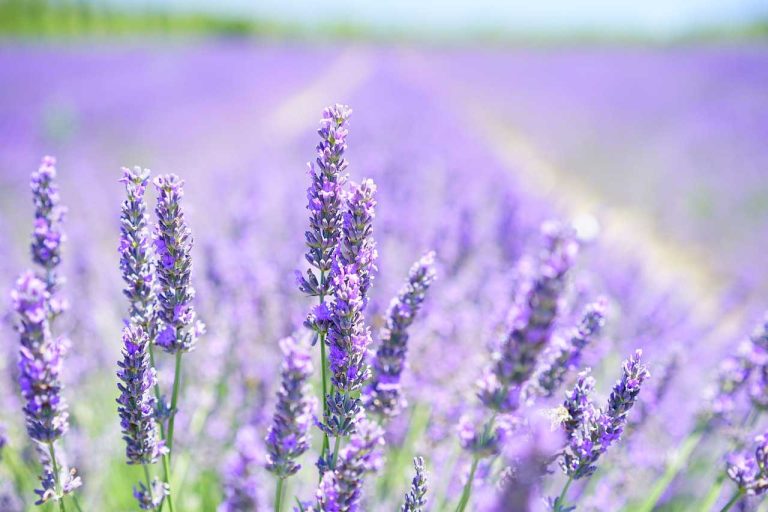Powdery mildew is a plant disease that is common and easy to identify.1 It affects almost any type of plant, but some are more susceptible than others. Examples of these plants include lilacs, crab apples, phlox, monarda, roses, grapes, squash, and cucumbers.
Signs of Powdery Mildew
Powdery mildew looks like grainy splotches of white or grey on the leaves and stems of plants.1 You may not notice the problem until the top surfaces of the leaves become powdery, but this fungal infection often starts from the bottom of the leaves and can spread to the stems, flowers, buds, and even the fruit.
Although powdery mildew affects a wide range of plants, each powdery mildew fungus is specific to a particular host plant. Therefore, the powdery mildew on your lavenders will not infect your grapes or roses. However, all powdery mildew fungi prefer the same weather conditions.
Effects of Powdery Mildew
Powdery mildew is generally not fatal to plants, but it can weaken them. Repeated infections of fine-grained mold can stress plants and make them more vulnerable to other diseases and insect damage. The fungal infection also leaches nutrients from the plant, causing leaves to wither and yellow. If the leaf surface becomes covered with powdery mildew, photosynthesis is impaired, and infected leaves often drop prematurely. This can be a particular problem on edible plants, as insufficient photosynthesis can affect the taste of the fruit or vegetable. If buds become infected before the flowers have a chance to open, the plants may not flower or bear fruit.
Causes of Powdery Mildew
Fine-grained mold fungus is widespread.1 The spores can survive the winter in plant debris and start producing more spores in the spring. These spores are transported to your plants by wind, insects, and splashing water. Factors that promote the growth and spread of powdery mildew include:
Periods of warm temperatures and dry conditions: Powdery mildew is less common during extended rainy periods and in extreme heat.
Crowded plantings where air circulation is poor, and the plants remain damp: The spores can spread more quickly when they land on clumps of their host plant.
What You Need
Plant clippers
Fungicide (with ingredients such as neem oil, potassium bicarbonate, sulfur, or copper)
Alcohol wipes (to clean clippers and hands)
Instructions
While removing and destroying all infected plants is an excellent solution, it is not always practical. Most gardeners are not willing to sacrifice their peonies or squash whenever there is a powdery mildew outbreak. Fortunately, there are some less drastic steps you can take.
Eliminate Infected Parts of Plants.
Remove or cut back the sections of your plants that have powdery mildew on them.2 If you see it on a few leaves, remove those leaves and do not compost them. Carefully clean your hands and clippers after completing the task.
Use a Fungicide.
Several fungicides are available. Check the label to make sure they are safe and effective on the type of plant that is infected. A natural remedy made from baking soda is also an effective preventative. One made from milk is believed to prevent powdery mildew. For constant protection, most fungicides will require repeat applications every 7 to 14 days. Always follow the label instructions for both application and waiting periods before harvest. While the fungicide won’t cure powdery mildew on leaves, it can help stop the spread to other leaves or plants.
Manage Your Garden.
Now that you know your plants are vulnerable to powdery mildew, you need to take a few steps to prevent its spread or recurrence.
Improve air circulation by thinning and pruning.
Do not fertilize the affected plants until the problem is resolved. Powdery mildew prefers young, tender growth.
Try not to water the plants from above, as this will spread the spores. Unfortunately, there is not much you can do about this if it rains.
Preventing Powdery Mildew.
The best defense against powdery mildew is to prevent the ideal conditions for its growth. That’s not always possible, but some seasons will be better than others. To gain an advantage:
Pick healthy plants and keep them growing healthily. Stressed plants invite disease. Don’t let your plants become stressed due to droughts or other poor growing conditions.
Seek out a powdery mildew-resistant cultivar. This is especially important if you garden in an area that is known to be vulnerable to an annual attack of powdery mildew.
Do not plant non-resistant varieties in the shade, where they may remain moist and provide the spores with an ideal place to grow.
